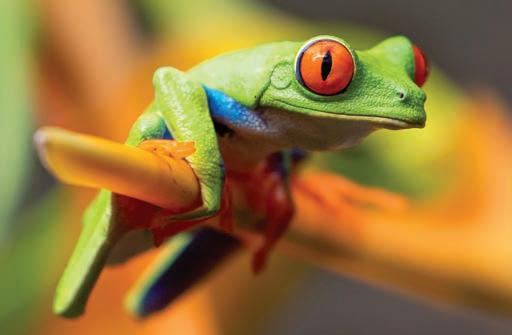
1 minute read
With not a leg to stand on, our frogs are croaking it
Between 2010 and 2019, total imports of frog’s legs into the EU numbered 40.7 million kg, which equals to up to roughly two billion frogs. While Belgium is the main importer, France is the main consumer. ese insights are part of a new study, published in the journal Nature Conservation, which found “inexplicable volatility” in the trade of frog legs and an extreme dependency of the EU on other countries to meet its demand.
Leading author Dr Auliya of the Leibniz Institute for the Analysis of Biodiversity Change in Bonn, Germany, outlines the manifold uncertainties underlying this trade: “ e international trade in frogs’ legs is a black box, whether it is the lack of spe- cies-speci c trade data, which would be needed to ensure sustainability, or the large- scale mislabeling in trade and the challenges to identify species when it comes to processed, skinned and frozen frogs’ legs.”
Advertisement
Frogs have a central role in the ecosystem as insect predators – and where frogs disappear, the use of toxic pesticides increases. Hence, the frogs’ legs trade has direct consequences not only for the frogs themselves, but for biodiversity and ecosystem health as a whole. e extent to which pesticide residues in frogs’ legs are traded internationally remains unclear.
In the 1970s and 1980s, India and Bangladesh were the top suppliers of frogs’ legs to Europe, but when their wild frog populations collapsed, both countries banned exports. Since then, Indonesia has taken over as the largest supplier. In the Southeast Asian country, as now also in Turkey and Albania, large-legged frog species are dwindling in the wild, one after the other, causing a fatal domino e\ect for species conservation. is increasingly threatens frog populations in the supplier countries.
“ e EU is by far the world’s largest importer of frogs’ legs, and large-legged species such as the crab-eating grass frog (Fejervarya cancrivora), the giant Javan frog (Limnonectes macrodon) and the East Asian bullfrog (Hoplobatrachus rugulosus) are in particular demand among supposed gourmets in Europe,” points out co- author Dr. Sandra Altherr, a biologist and wildlife trade expert of the Germanybased charity Pro Wildlife. e harvest of wild frog populations and species produced at commercial frog farms for the purpose of consumption also leaves disease control and hygiene measures by the wayside; additionally, the cross-border trade of species for consumption has led to genetic pollution and hybridisation between species.










